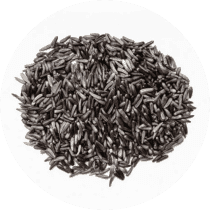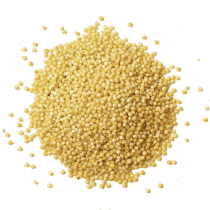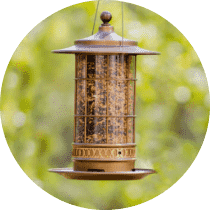Purple Finch
A species of Haemorhous Scientific name : Haemorhous purpureus Genus : Haemorhous
Purple Finch, A species of Haemorhous
Botanical name: Haemorhous purpureus
Genus: Haemorhous
Content
Description People often ask General Info
 Photo By Cephas , used under CC-BY-SA-3.0 /Cropped and compressed from original
Photo By Cephas , used under CC-BY-SA-3.0 /Cropped and compressed from original Description
An inhabitant of wet, open coniferous forests, the purple Finch (Haemorhous purpureus) likes to visit birdfeeders, but only those that are not dominated by the House finch (Haemorhous mexicanus) or House sparrow (Passer domesticus). This short-distance migratory bird lives in a monogamous relationship, in which the pair chooses a nesting site and feeds the nestlings together. This beautiful bird can be recognized by its reddish-purple plumage and undulating flight.
Size
14 - 16 cm
Life Expectancy
11 years
Nest Placement
Tree
Clutch Size
2 - 7 eggs
Incubation Period
1 - 2 broods
Number of Broods
12 - 13 days
Nestling Period
13 - 16 days
Feeding Habits
Purple Finch predominantly consume seeds, particularly from coniferous trees, elms, tulip poplars, and maples. They also feed on soft buds, nectar, fruits, and berries like blackberries, poison ivy, crabapples, and more. In winter, seeds from plants such as dandelions and ragweed are included in their diet. Occasionally, purple Finch eat insects like aphids and caterpillars. They forage in trees, bushes, and ground vegetation and show a preference for sunflower seeds, millet, and thistle.
Habitat
Purple Finch typically inhabit moist, cool coniferous and mixed forests, predominantly in Canada and the northeastern United States, along with wooded areas of the U.S. Pacific coast. They favor environments ranging from evergreen forests in the summer to a wider array of locales, such as shrubby areas and weedy fields, during the winter. This bird species nests either on horizontal branches or in forks of trees, often in regions aligned with woodlands, streams, suburbs, hedgerows, and sometimes backyards.
Nest Behavior
Purple Finch take 3-8 days to build their nests, with the female primarily responsible.
Nest Characteristics
Purple Finch typically nests on limbs of coniferous or deciduous trees such as oaks, maples, and cherries, at heights ranging from 2.5 to 60 feet. Nests may be under a sheltering branch, constructed with twigs, sticks, roots, fine grasses, and animal hair, measuring about 7 inches wide and 4 inches tall.
Dite type
Granivorous
People often ask
General Info
Feeding Habits
Bird food type

Black Oil Sunflower Seeds

Hulled Sunflower Seeds

Nyjer

Millet
Bird Feeder Type

Large Tube Feeder

Small Tube Feeder

Large Hopper

Small Hopper

Platform
Behavior
Purple Finch engage in various activities throughout the day, from foraging for seeds and berries to singing melodious tunes. Their interaction with their environment is characterized by territorial aggression, particularly at feeding sites where females often dominate males. Ritualistic courtship displays are intricate, involving males singing, hopping, feather fluffing, and presenting nesting materials to potential mates, sometimes followed by a unique short, vertical flight. Daily life is a blend of feeding, vigilant defense of territory, and, during breeding season, elaborate mating rituals that strengthen pair bonds and precede copulation.
Distribution Area
Their breeding habitat is coniferous and mixed forest in Canada and the northeastern United States, as well as various wooded areas along the U.S. Pacific coast. Birds from northern Canada migrate to the southern United States; other birds are permanent residents. This bird has also been displaced from some habitat by the introduced house sparrow. 
Species Status
Not globally threatened.
Scientific Classification
Phylum
Chordates Class
Birds Order
Perching birds Family
Finches Genus
Haemorhous Species
Purple Finch